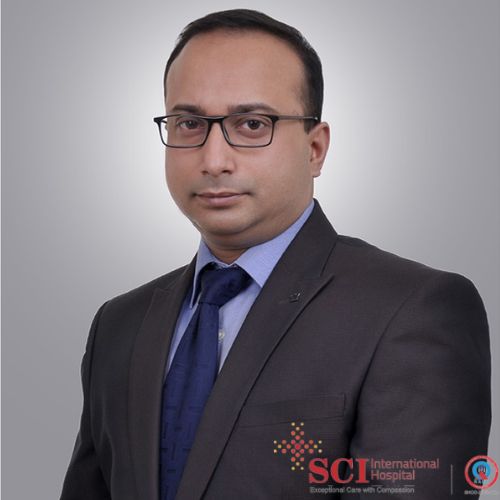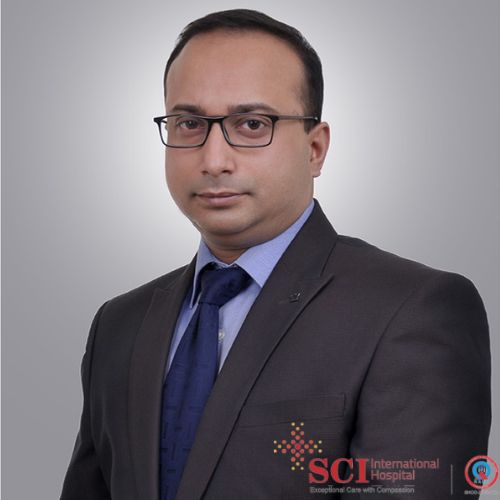What are the Causes of Gallstones?
Gallstones form when there's a problem with the bile in your gallbladder. One common cause is too much cholesterol in the bile. When the liver makes more cholesterol than the bile can dissolve, it can turn into yellow stones — these make up about 80% of all gallstones.
Another cause is a buildup of bilirubin, a substance made when red blood cells break down. If your body can’t remove extra bilirubin properly, it can lead to dark-colored stones. Lastly, if your gallbladder doesn’t empty fully, bile stays inside too long and becomes thick. This makes it easier for stones to form, especially after eating fatty foods.
What are the Symptoms of Gallstones?
Many people with gallstones don’t have any symptoms. But if a stone blocks the bile duct, it can cause painful problems.
- Biliary Colic (Gallstone Attack):The most common symptom is sudden pain in the upper right belly. The pain may spread to the center of your chest, right shoulder, or back. It often starts after eating fatty food and can last from a few minutes to several hours.
- Nausea and Vomiting: Pain from a gallstone attack can make you feel nauseous or cause you to vomit.
- Digestive Discomfort: The duration of discomfort during a gallstone episode can fluctuate, persisting anywhere from brief moments to extended periods. An episode typically subsides when the gallstone dislodges, allowing bile to flow freely again. The variability in duration depends on how long the blockage persists.
- Other Signs:In rare cases, gallstone pain may lead to sweating, dizziness, or a fast heartbeat — signs of low blood pressure. These symptoms should be treated right away.
When to see a doctor for Gallstones?
Gallstones don’t always cause symptoms, but some warning signs mean you should see a doctor right away.
- Ongoing or Severe Pain:If you have strong belly pain that doesn’t go away or makes it hard to move or sit comfortably, it could be a sign of a blockage.
- Yellow Skin or Eyes (Jaundice)If your skin or the whites of your eyes turn yellow, it may mean a gallstone is blocking your bile duct. This needs quick medical care.
- Fever and ChillsA high fever with chills, especially with belly pain or yellowing skin, can mean a serious infection. You should get emergency help.
- Any Concerning SymptomsIf something doesn’t feel right, even if it’s small, talk to your doctor. Early check-ups can help prevent bigger problems later.
How to prevent Gallstones?
You can’t always stop gallstones from forming, but healthy habits can lower your risk — especially cholesterol stones.
- Stay active: Regular exercise helps manage weight and keeps cholesterol in check.
- Eat healthy foods: Focus on fruits, vegetables, whole grains, and lean proteins.
- Avoid fatty, oily foods: Cut down on red meat, fried snacks, desserts, and full-fat dairy.
- Maintain a healthy weight: If you’re overweight, lose weight slowly — about ½ kg per week is safe.
- Don’t skip meals: Eat regular meals to keep bile moving and prevent it from becoming too thick.
For personalized advice, talk to a doctor or dietitian. They can help you create a plan that fits your health needs.
What are the complications of Gallstones?
If gallstones block a bile duct, they can cause serious health problems:
- Cholecystitis: Inflammation of the gallbladder causing pain and fever.
- Cholangitis: Infection in the bile ducts, often with fever, chills, and jaundice.
- Pancreatitis: Inflammation of the pancreas, leading to severe belly pain.
- Jaundice: Yellow skin and eyes caused by bile backing up in the blood.
- Gallbladder cancer (rare): Long-term gallstones may slightly raise your risk.
- Gallstone ileus: A gallstone can block the intestines, which can be life-threatening.
What triggers gallstone pain?
Gallstone pain, or biliary colic, is primarily caused by blockages in bile flow:
- Cystic Duct Obstruction: Gallstone pain typically occurs when a gallstone becomes lodged in the cystic duct, the narrow tube that connects the gallbladder to the common bile duct. Such a blockage impedes the regular passage of bile through the system.
- Postprandial Trigger (After Eating): The gallbladder contracts after meals, particularly those high in fat, to release bile to aid digestion. This contraction can force a gallstone into the cystic duct, triggering a gallstone attack. The timing of pain after eating highlights the gallbladder's role in digestion.
- Biliary Colic: The resulting pain, known as biliary colic or a gallstone attack, is often sudden and sharp. This pain arises from the gallbladder's continued attempts to contract against the blockage, increasing pressure within the gallbladder.
- Fatty Meal Influence: Fatty meals are particularly likely to trigger gallstone pain because they stimulate stronger gallbladder contractions to process the fat, increasing the chances of a gallstone obstructing the cystic duct. This explains why symptoms often appear after consuming rich foods.
How to Diagnose gallstones?
Doctors use a combination of physical exams, lab tests, and imaging to check for gallstones.
Blood Tests
- Complete blood count (CBC): To identify any signs of infection.
- Liver function tests (LFTs): Elevated levels might indicate a blocked bile duct.
- Bilirubin levels: Increased bilirubin could signal a blockage or other liver problems.
- Pancreatic enzyme tests: such as amylase and lipase, are done if pancreatitis is suspected.
Imaging Tests
Imaging tests help visualise the gallbladder and bile ducts to identify gallstones and assess the severity of any blockages:
- Abdominal ultrasound: This imaging technique employs acoustic waves to generate visual representations of the gallbladder and adjacent structures, effectively revealing the existence of calculi.
- CT scan: Computed tomography scanning offers high-resolution images of the abdominal region, capable of identifying gallstones and additional irregularities.
- Magnetic resonance cholangiopancreatography (MRCP): MRCP is an imaging method that utilises magnetism and radiofrequency signals to visualise the biliary tract, aiding in the identification of calculi within the bile channels.
- Magnetic resonance cholangiopancreatography (MRCP): MRCP is an imaging method that utilises magnetism and radiofrequency signals to visualise the biliary tract, aiding in the identification of calculi within the bile channels.
- Cholescintigraphy (HIDA scan): This test assesses gallbladder function. A radioactive tracer is injected, and its movement through the biliary system is tracked to identify blockages.
- Endoscopic retrograde cholangiopancreatography (ERCP): ERCP is a diagnostic and therapeutic technique involving the insertion of a slender, bendable instrument equipped with a camera, which is guided through the oral cavity and oesophagus into the initial portion of the small bowel. Dye is injected to visualise the bile ducts, and stones can be removed during the procedure if necessary.
- Endoscopic ultrasound: Combines endoscopy with ultrasound to visualise the bile ducts and pancreas for more detailed imaging.

Dr. Daipayan Ghosh
MBBS, DNB - General Surgery, General Surgeon, Laparoscopic Surgeon, Proctologist, Bariatric Surgeon
- General Surgeon, Laparoscopic Surgeon, Proctologist, Bariatric Surgeon
- 23+ Years Experience

Dr. Shambhav Chandra
MBBS, MS - General Surgery, General Surgeon, Bariatric Surgeon, Laparoscopic Surgeon
What are the treatment options for Gallstones?
The approach to managing gallstones varies based on whether symptoms are present and how intense they are. If gallstones aren't causing any symptoms, often no treatment is needed. Some small gallstones can pass through the body on their own.
- Laparoscopic cholecystectomy: The primary surgical intervention for eliminating gallstones is a minimally invasive technique known as laparoscopic cholecystectomy. This operation entails creating multiple tiny openings in the abdominal wall and employing a slender, camera-equipped instrument to extract the gallbladder. Typically, this less invasive surgical approach facilitates faster healing and reduces the duration of hospitalisation.
- Open cholecystectomy: The conventional surgical method requires a more extensive incision to facilitate gallbladder extraction. It might be necessary for people with certain medical conditions or if complications arise during laparoscopic surgery.
- Nonsurgical treatments: If surgery isn't an option, medications can sometimes be used to dissolve cholesterol gallstones, though this can take years and the stones might return. In uncommon instances, a technique employing high-energy waves to fragment calculi, known as shock wave lithotripsy, might be contemplated, frequently in conjunction with pharmaceutical treatments. Endoscopic retrograde cholangiopancreatography (ERCP) can remove gallstones in the bile ducts.
Conclusion
Gallstones are a common condition. Understanding the causes, symptoms, and treatment options empowers you to make informed decisions about your health. If you suspect you might have gallstones, consulting a doctor for an accurate diagnosis and personalised treatment plan is essential. While surgery is often the most effective solution for symptomatic gallstones, preventive measures like maintaining a healthy lifestyle can significantly reduce your risk.
FAQs
Gallstones are not always serious. Many people have them and don’t even know it. But in some cases, gallstones can block the bile ducts and cause severe pain, infection, or inflammation. If not treated, this can lead to serious health problems and damage to nearby organs.
Small gallstones may go away on their own if they don’t cause symptoms. But if you have pain or discomfort, surgery is usually the best option. Medicines can dissolve stones, but they work slowly and may not prevent them from coming back.
Drinking plenty of water is good for your health, but it can’t remove gallstones. Water helps your body work better, but it doesn’t break down or flush out gallstones.
Foods that are high in unhealthy fats—like fried foods, fatty meats, and processed snacks—can increase your risk of gallstones. Sugary foods and refined carbs like white bread and sweets can also make gallstones more likely.
Very small gallstones might go away on their own, but most do not. Even if one disappears, more can form later. That’s why it’s important to get checked if you have symptoms.
Yes, you can live with gallstones if they don’t cause any problems. But if they cause pain or health issues, doctors often suggest removing them, usually by taking out the gallbladder. Your body can still work fine without a gallbladder. The liver will keep making bile to help with digestion.
Consult Now
Our Patients Love Us
Excellent



